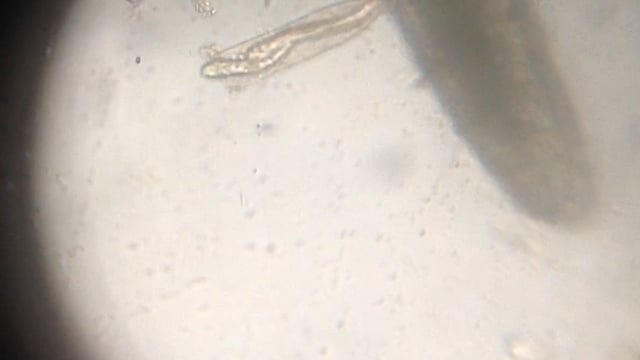More on Rotifers….to be continued.
 Mar 19, 2016 • 5:30 PM UTC
Mar 19, 2016 • 5:30 PM UTC Unknown Location
Unknown Location 140x Magnification
140x Magnification Microorganisms
Microorganisms
Cristina
Learn about the author...
19posts
52comments
1locations


Most rotifers are motile. They swim by means of their corona cilia, as we have been able to see in former posts. Others are semisessile, attaching vía their foot and intermittently swimming or creeping, similarly to leeches locomotion. Nevertheless, some rotifers live in a secreted tube. With this post I want to share with you this fact. It amazes me that as an University student I clearly remember studying these invertebrates but never saw as much as I have been able to by means of using a foldscope and by reading you, foldscope community.
Some weeks ago, I took a fresh water sample to my students (9 th. grade) in order to make them realise it represented a whole macro/microscopic ecosystem. Our challenge was to find out which living things this sample included, to know “who they were and how did they live ” and, finally, discover who ate whom and make a food web using the photos we shot. It was a real pleasure to hear them saying…..Wow! Come and watch this…..it’s Beautiful!
Some weeks ago, I took a fresh water sample to my students (9 th. grade) in order to make them realise it represented a whole macro/microscopic ecosystem. Our challenge was to find out which living things this sample included, to know “who they were and how did they live ” and, finally, discover who ate whom and make a food web using the photos we shot. It was a real pleasure to hear them saying…..Wow! Come and watch this…..it’s Beautiful!

Among the incredible living things we saw, there were sessile Rotifers. I had never seen them before. One of them seems branched (can they organise in colonies?) and although we can no notice a mastax (pharynx hard pieces to chew food), I believe they are wheeled animalcules. If you think our statements are wrong, please let us know. Thank you!


Cristina Bosch
Sign in to commentNobody has commented yet... Share your thoughts with the author and start the discussion!

 0 Applause
0 Applause 0 Comments
0 Comments














